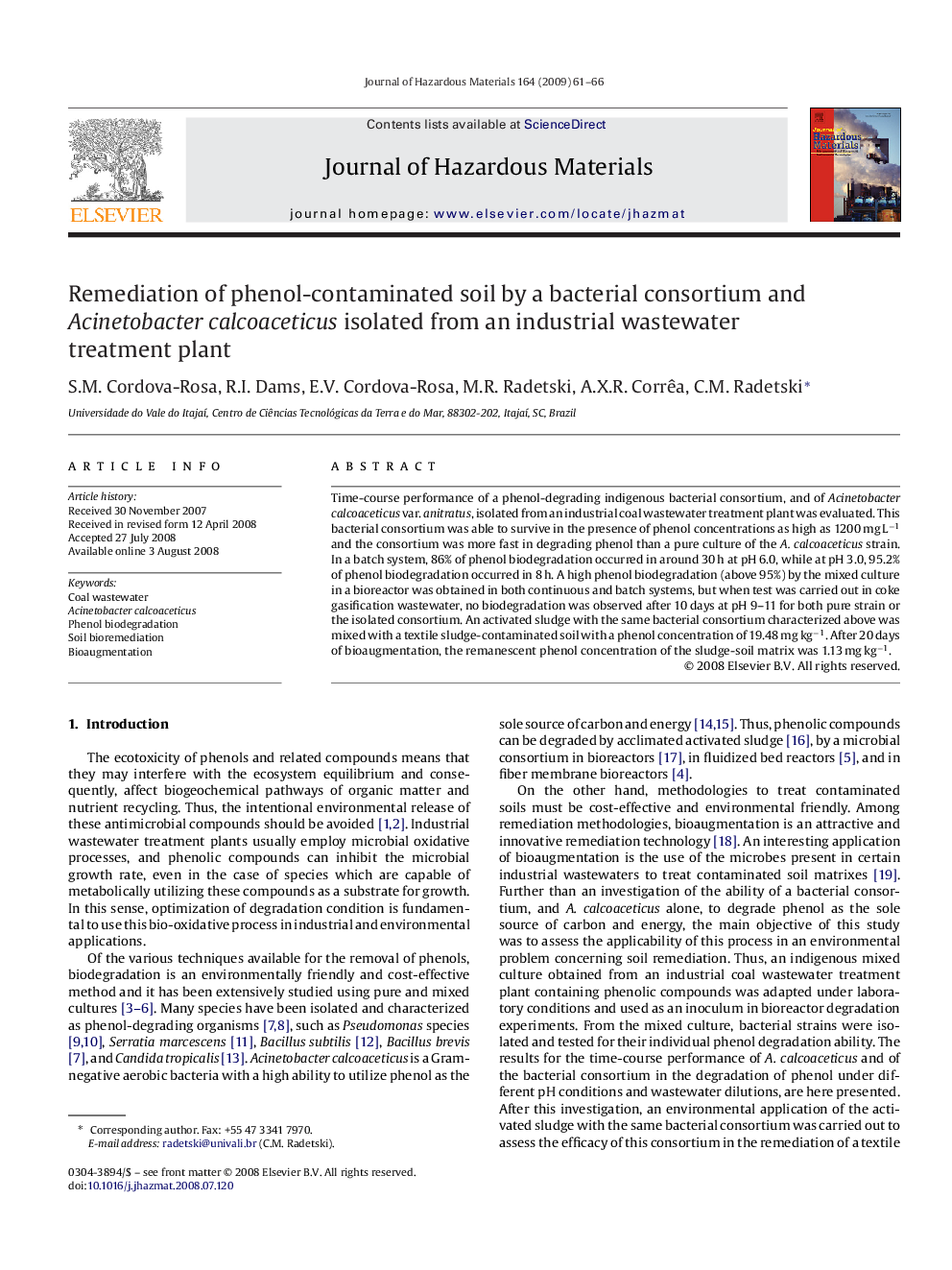| Article ID | Journal | Published Year | Pages | File Type |
|---|---|---|---|---|
| 582192 | Journal of Hazardous Materials | 2009 | 6 Pages |
Abstract
Time-course performance of a phenol-degrading indigenous bacterial consortium, and of Acinetobacter calcoaceticus var. anitratus, isolated from an industrial coal wastewater treatment plant was evaluated. This bacterial consortium was able to survive in the presence of phenol concentrations as high as 1200 mg Lâ1 and the consortium was more fast in degrading phenol than a pure culture of the A. calcoaceticus strain. In a batch system, 86% of phenol biodegradation occurred in around 30 h at pH 6.0, while at pH 3.0, 95.2% of phenol biodegradation occurred in 8 h. A high phenol biodegradation (above 95%) by the mixed culture in a bioreactor was obtained in both continuous and batch systems, but when test was carried out in coke gasification wastewater, no biodegradation was observed after 10 days at pH 9-11 for both pure strain or the isolated consortium. An activated sludge with the same bacterial consortium characterized above was mixed with a textile sludge-contaminated soil with a phenol concentration of 19.48 mg kgâ1. After 20 days of bioaugmentation, the remanescent phenol concentration of the sludge-soil matrix was 1.13 mg kgâ1.
Keywords
Related Topics
Physical Sciences and Engineering
Chemical Engineering
Chemical Health and Safety
Authors
S.M. Cordova-Rosa, R.I. Dams, E.V. Cordova-Rosa, M.R. Radetski, A.X.R. Corrêa, C.M. Radetski,
